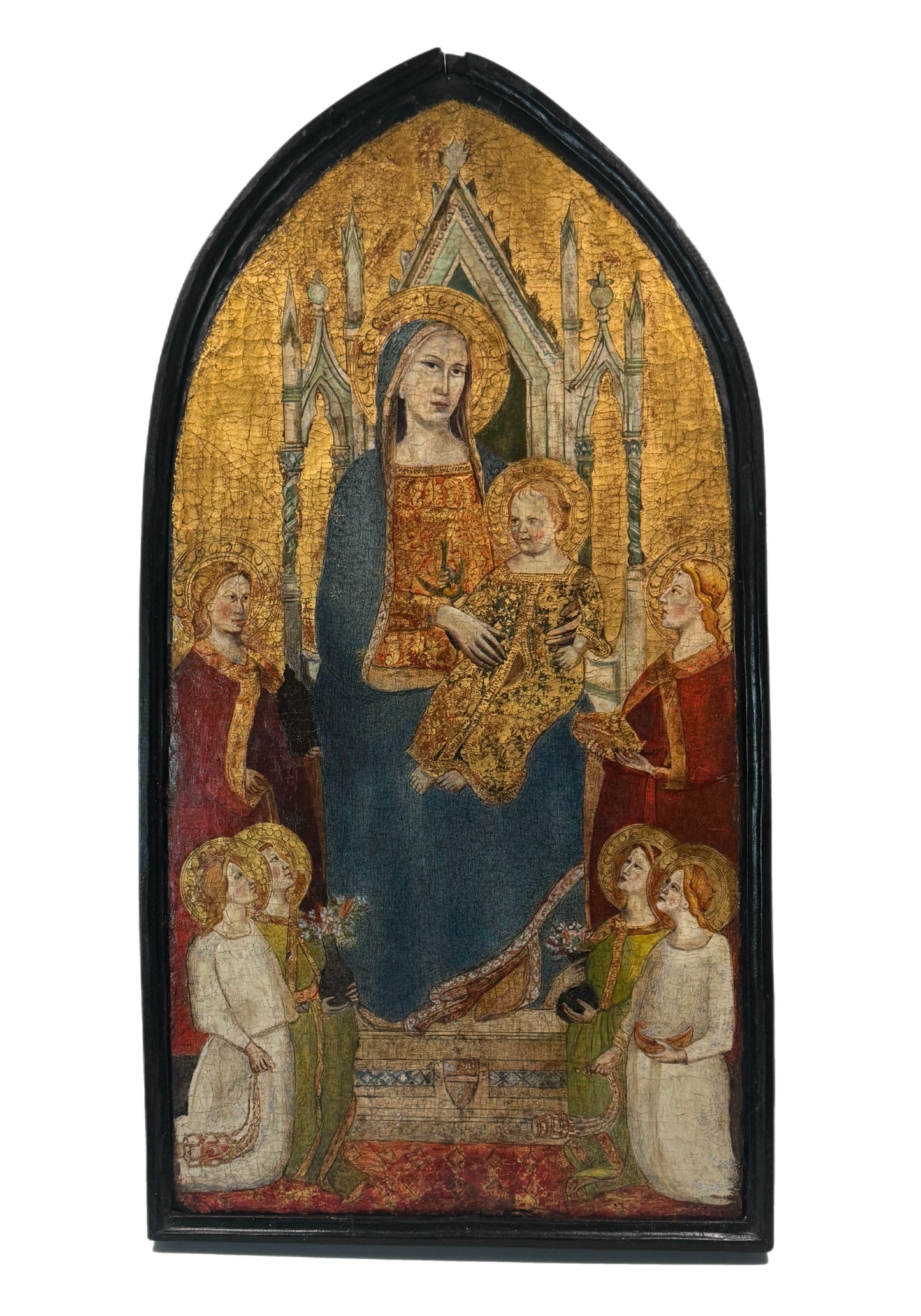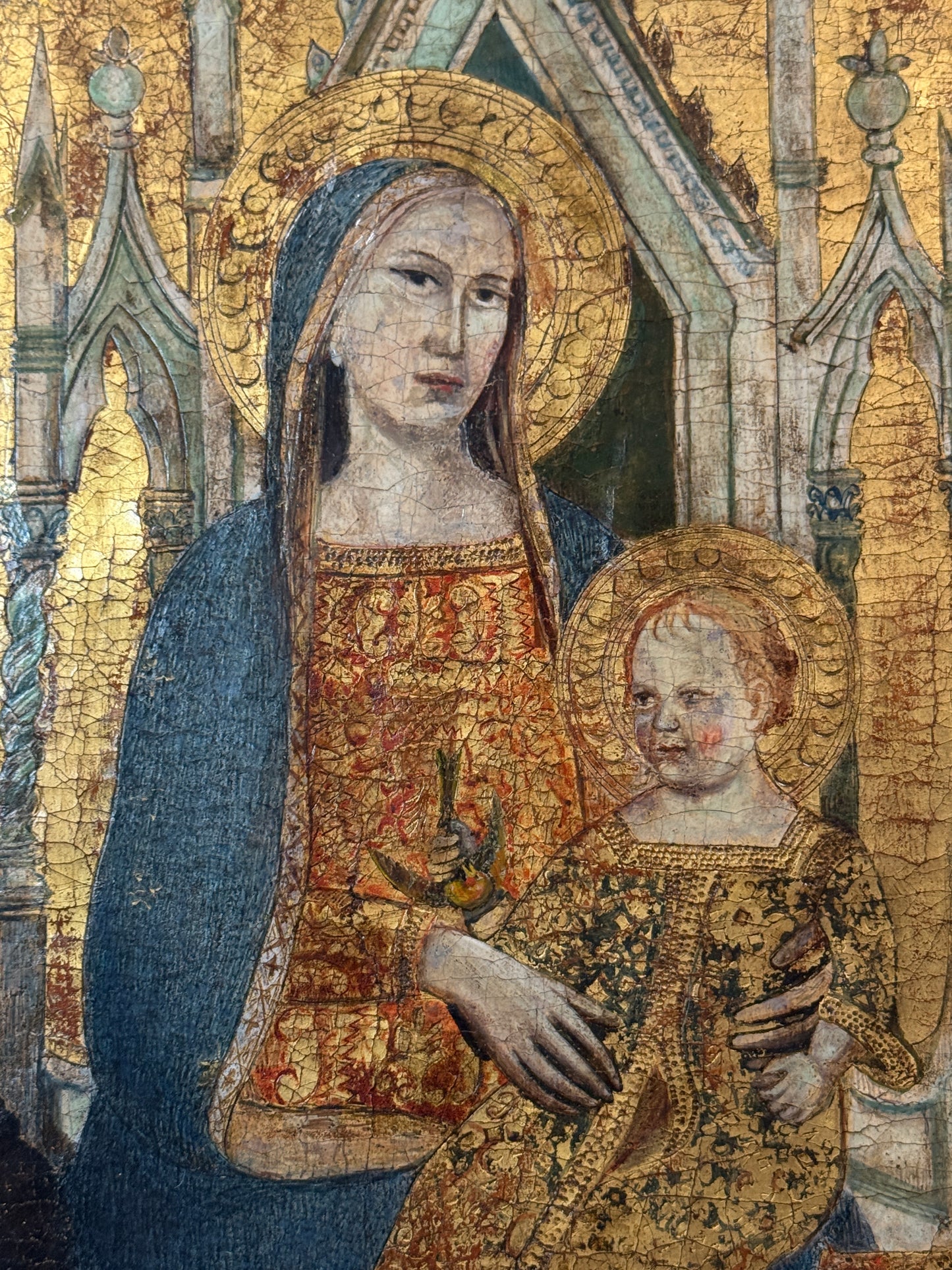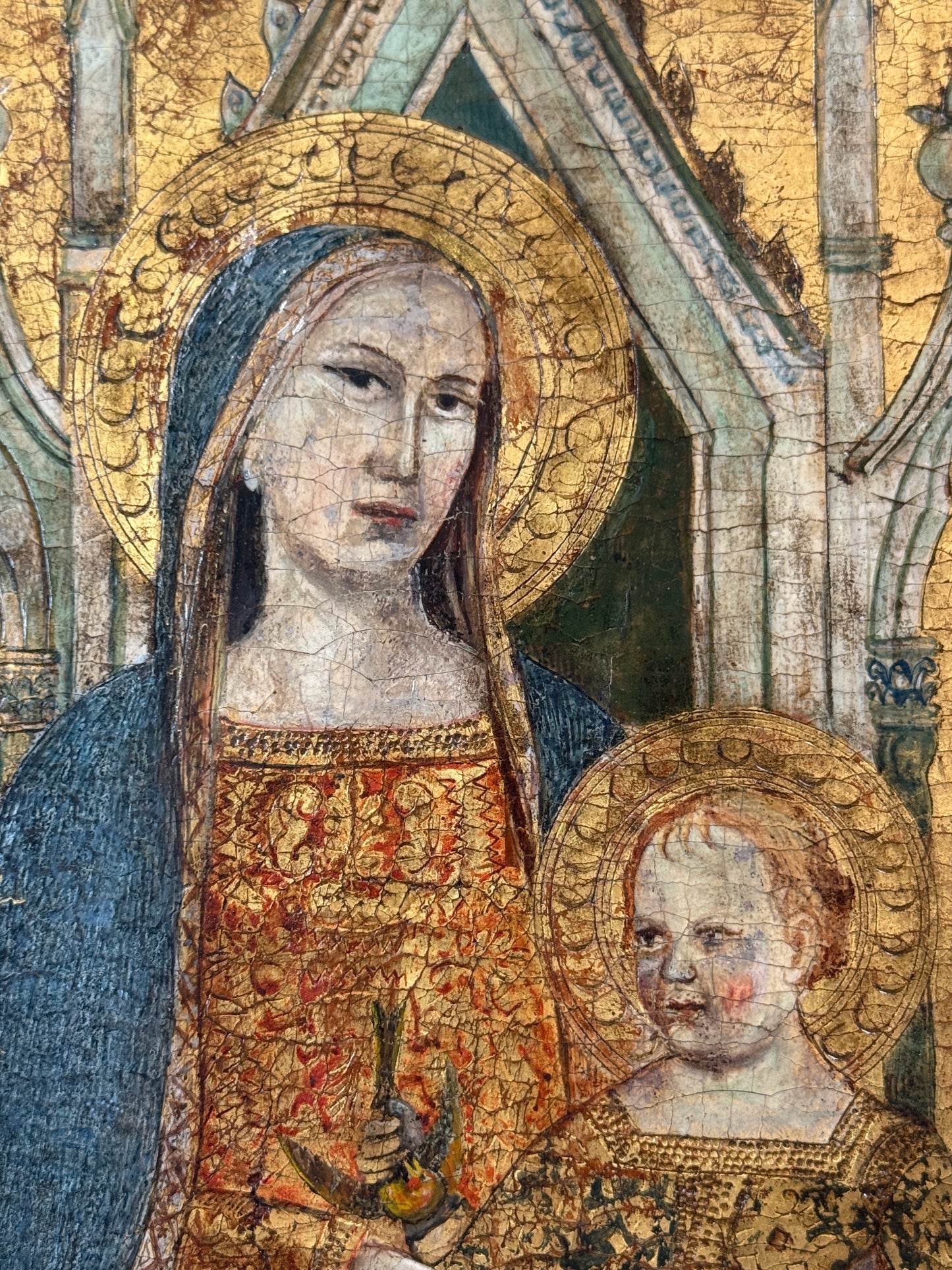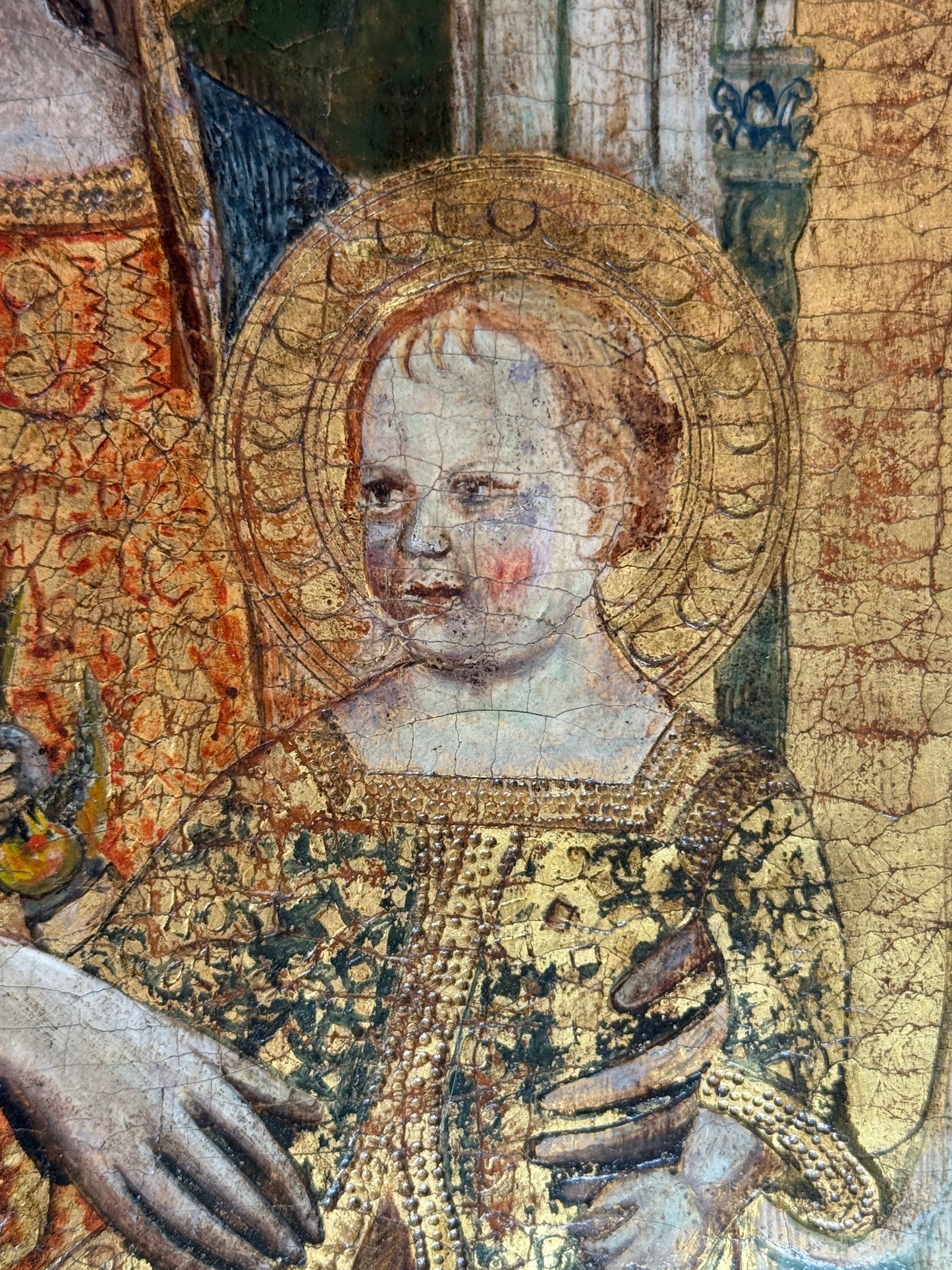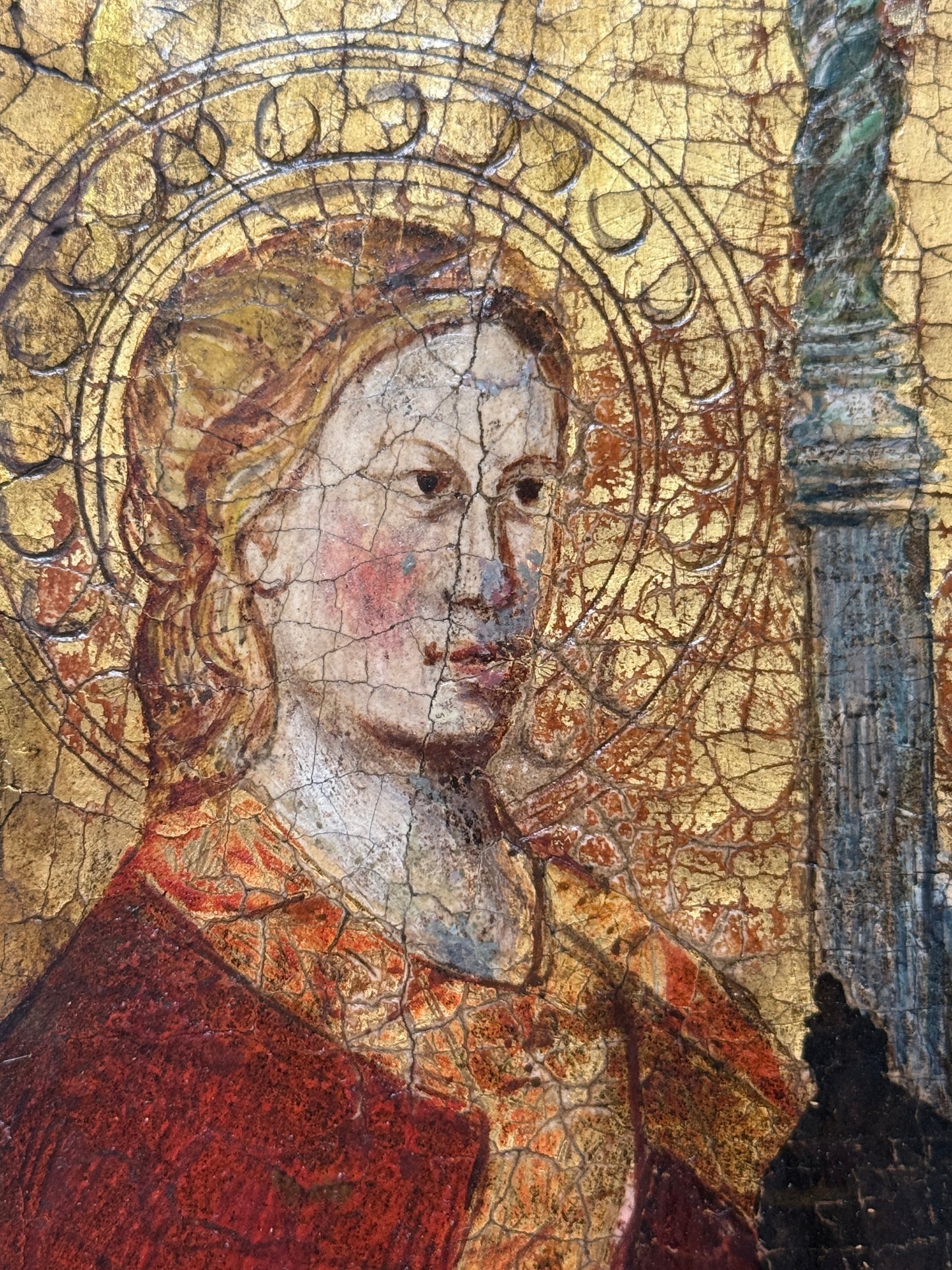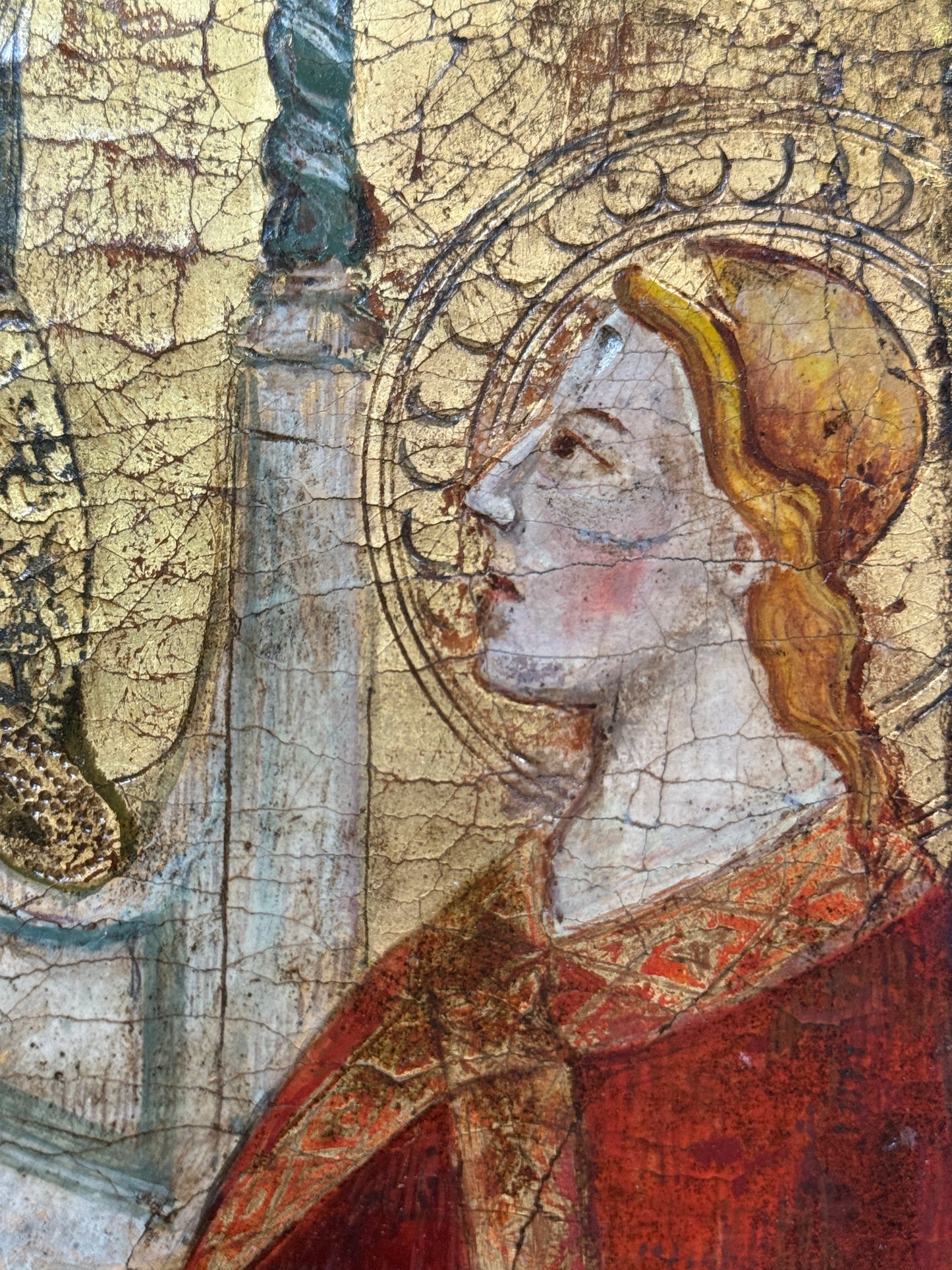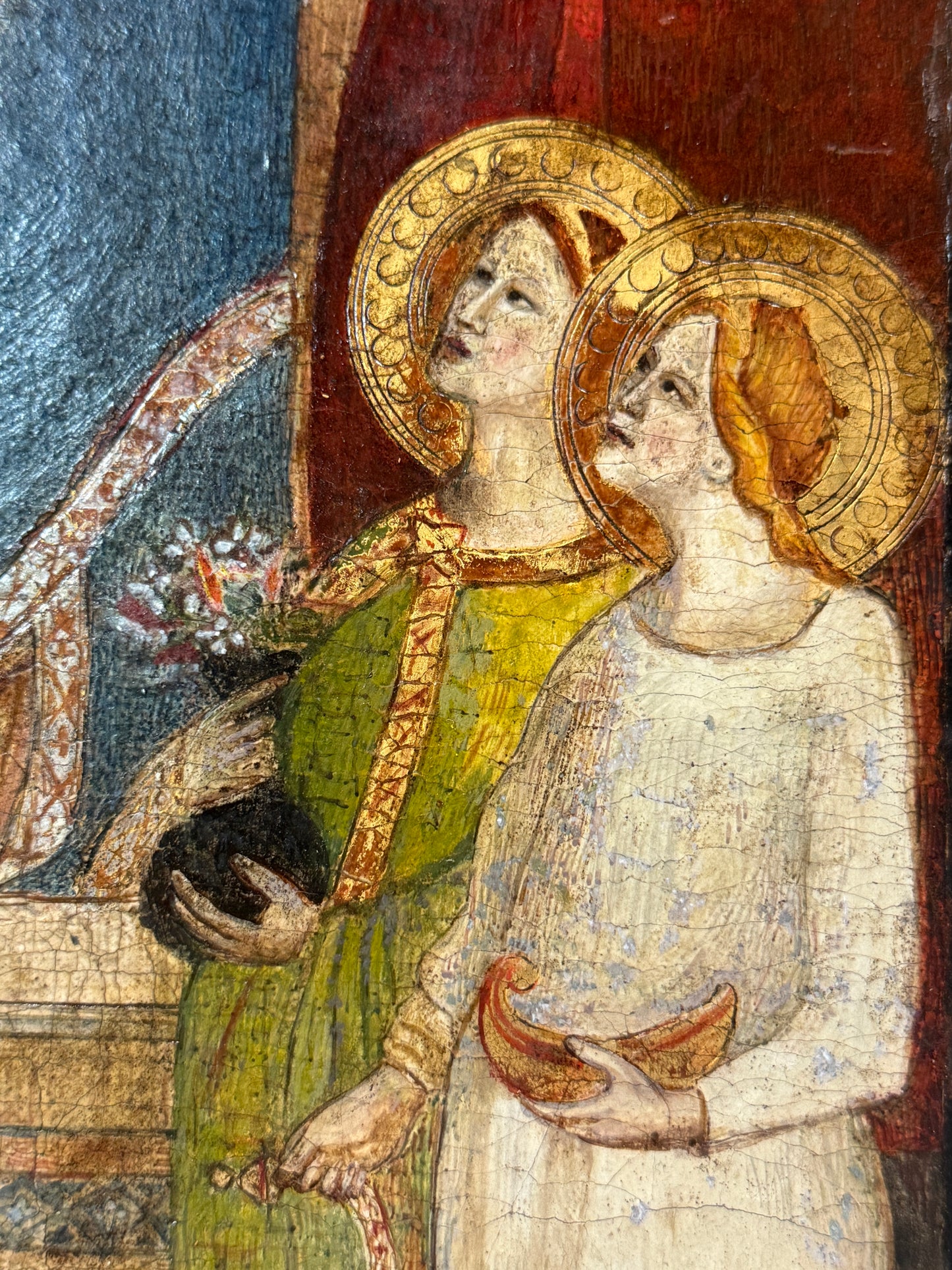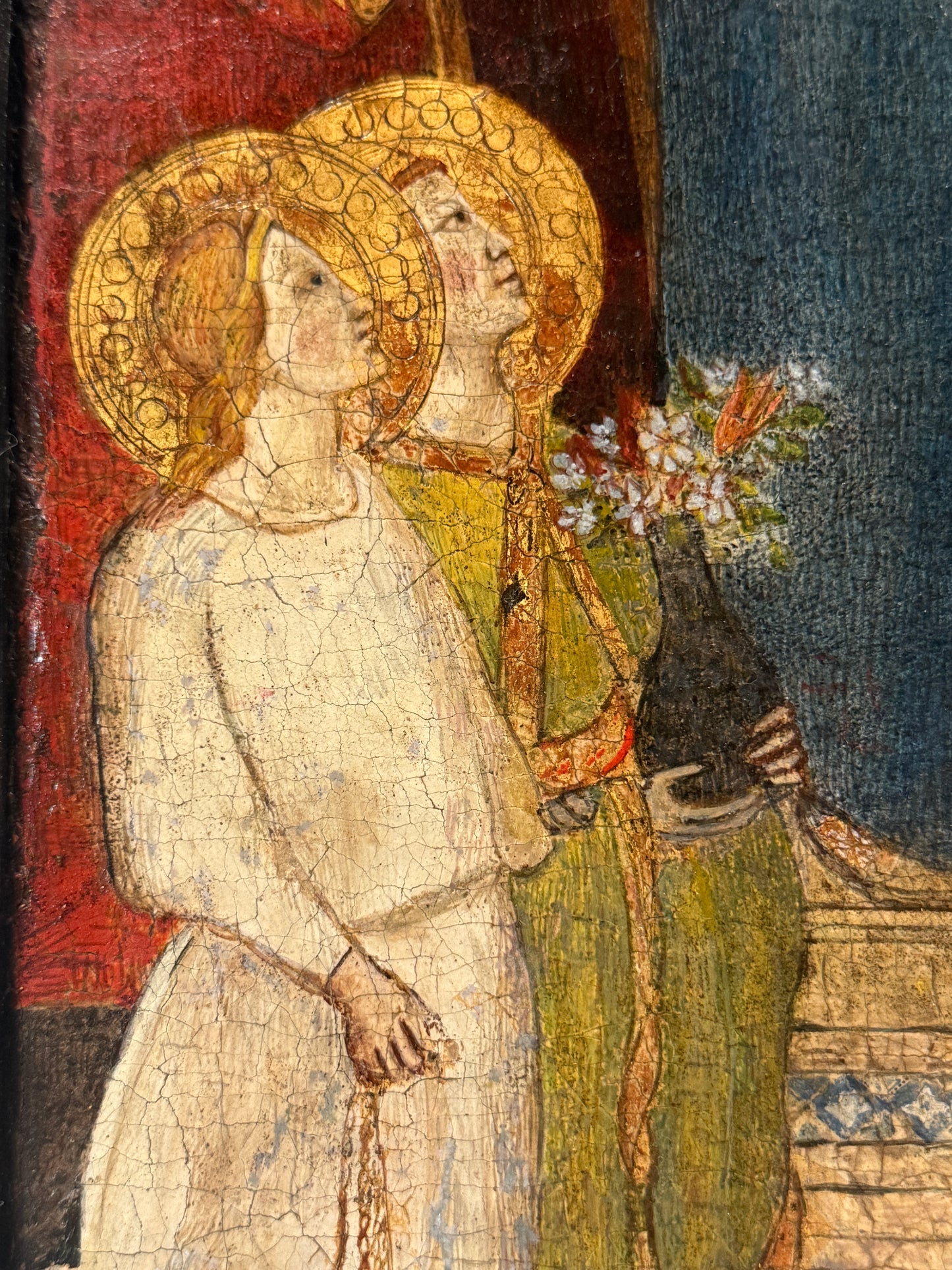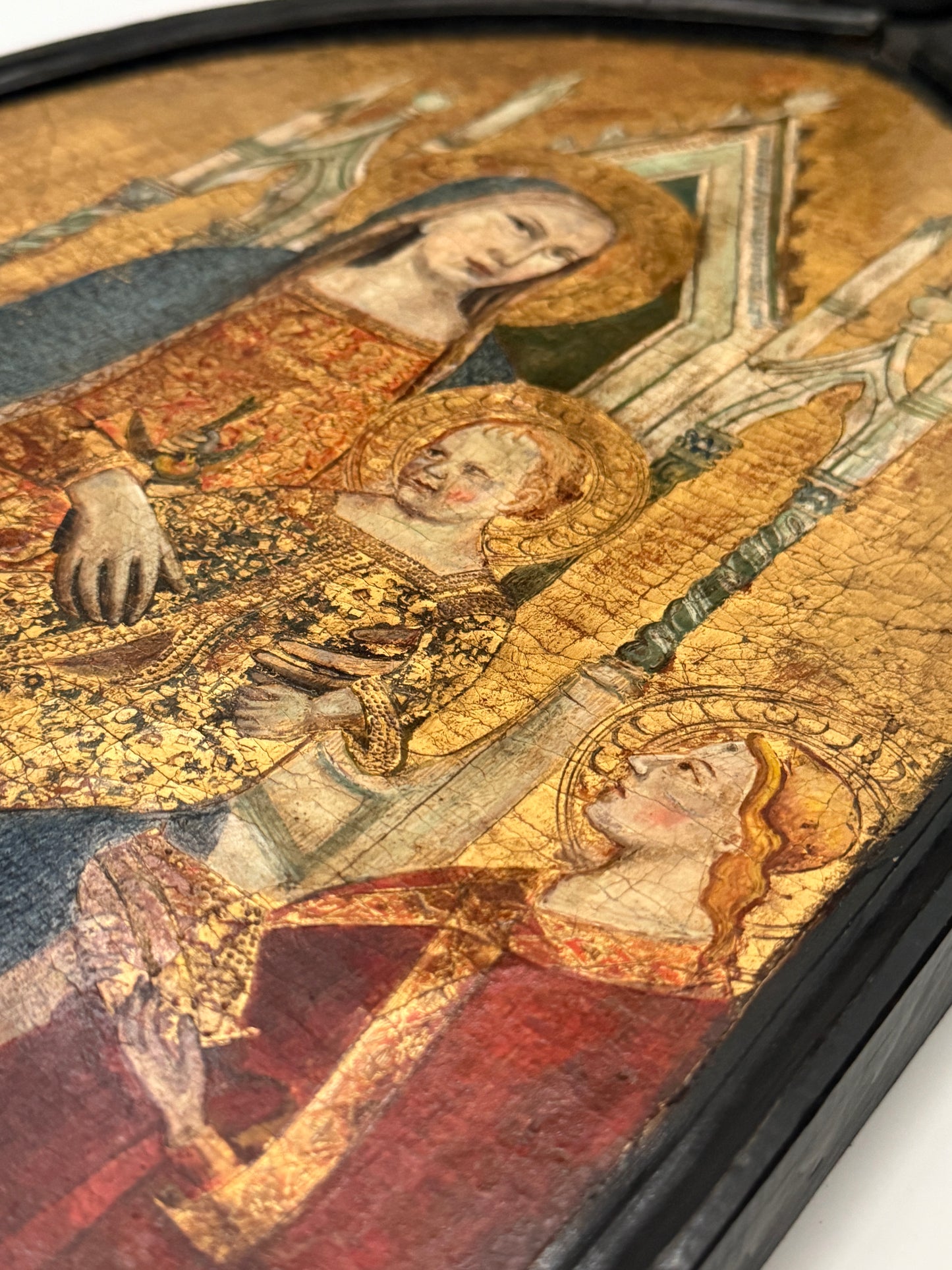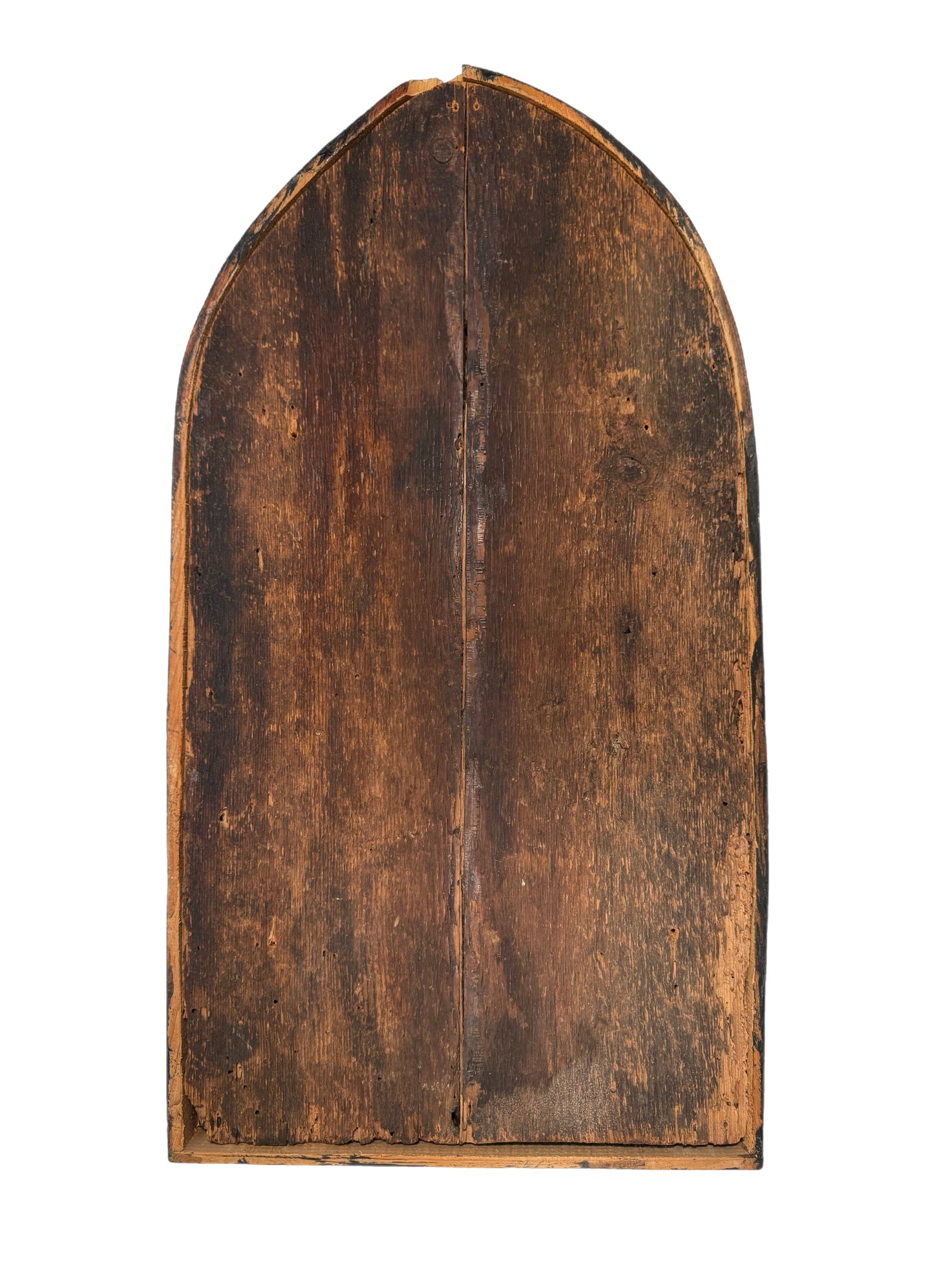Madonna and Child Enthroned with Angels; Follower of Taddeo GADDI c.1370
Madonna and Child Enthroned with Angels; Follower of Taddeo GADDI c.1370
Couldn't load pickup availability
Madonna and Child Enthroned with Angels, follower of Taddeo Gaddi. Tempera and gold on panel with gesso ground. Probably Siena, c.1370.
-------------------
This elegant panel was painted by a follower of Taddeo Gaddi, the foremost pupil of Giotto, widely regarded as the founder of Western pictorial naturalism. This panel closely mirrors his celebrated Madonna and Child Enthroned in the Uffizi, originally executed for the Segni family chapel at San Lucchese in Poggibonsi. Likely produced in Siena or a surrounding Tuscan workshop familiar with Gaddi’s models, the painting would have adorned a private chapel or the domestic setting of a wealthy family, reflecting the widespread appeal of Gaddi’s devotional compositions throughout the fourteenth century. The architectural throne, geometric tiling, and ornamental gilding suggest a skilled yet provincial hand, with passages, particularly the central figures, of notably high quality. Like Gaddi’s original, which is not believed to have formed part of a triptych or polyptych, this panel too appears to survive in its original, complete format. This is very scarcely encountered among medieval panels of this type which were frequently cut down or altered.
The Virgin is shown enthroned on an elaborate Gothic seat flanked by architectural pinnacles. She holds the Christ Child, who gently clasps her hand and holds a goldfinch, a traditional symbol which prefigures the Passion. To either side, two female Saints, probably Mary Magdalene and Catherine of Alexandria, present a pyx and a crown. Below, four angels in adoration offer flowers and swing censers in a compositional echo of Giotto’s Maestà di Ognissanti, Florence (c.1306).
A beautiful and notably well preserved 14th century Sienese gold ground panel, extremely rare to find offered for private acquisition, particularly with such close links to one of the greatest masterpieces of Gaddi's oeuvre, and being so representative of the Sienese Trecento more generally. With clear expressions of Gaddi's Giottesque vocabulary, it ranks among the more visually compelling medieval panels to appear on the private market in recent years.
-------------------
Size: 300 x 560 mm (approx., incl. frame)
Condition:
The panel is in a stable and overall fair state of preservation, consistent with its period. The wooden support comprises two vertically joined planks with an integrated arched top, original, showing extensive age related wear, historical insect activity, and minor losses at the edges. The recto displays dense and evenly distributed craquelure across the painted and gilded areas, as with most works executed in tempera on gesso grounds with gold leaf of this period. The wood is most likely poplar. Little to no warping of the wood panel itself, suggesting it was not stored in a church for an extended period and has been kept in a more stable environment.
Ultraviolet light reveals widespread but controlled historic retouching, particularly to the Virgin’s face and mantle, the Christ Child’s robe, and the garments of the two central kneeling angels. Additional areas of inpainting are visible in the gold background. The punchwork and tooled haloes remain legible, with softened relief due to age and handling. No overpainting or modern restoration is visible to the naked eye beyond the aforementioned areas. Traditional gesso grosso and gesso sottile beneath the paint and gilding are visible in areas of surface loss. Incised preparation marks are present around the figures and architectural elements, typical of workshop practice. Egg tempera, probably using azurite in the Virgin’s mantle and vermilion and red lake glazes in the garments of the angels. The floor is executed with geometric tiling in ochres and vermilion, consistent with Tuscan workshop technique.
The panel has not been subjected to technical imaging or pigment analysis. While the stylistic and material evidence supports a date of c.1370, the presence of widespread retouching and the inherent challenges in dating gold ground panels without diagnostic testing must of course be noted. The construction of the panel is also consistent with this date, and if later, isn't much later and is almost certainly within the final quarter of the 14th century.
Small black frame with a little loss to the top of the arch. The frame is understated and complements the panel nicely. No hoops/hangings attached to the verso, but with a few small holes where this has been done previously.
